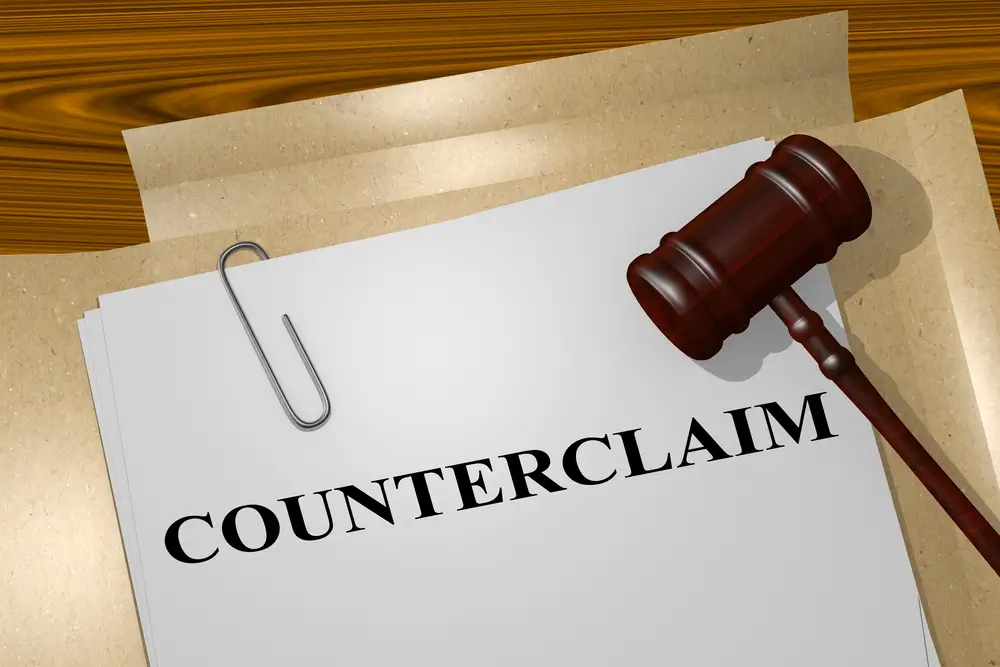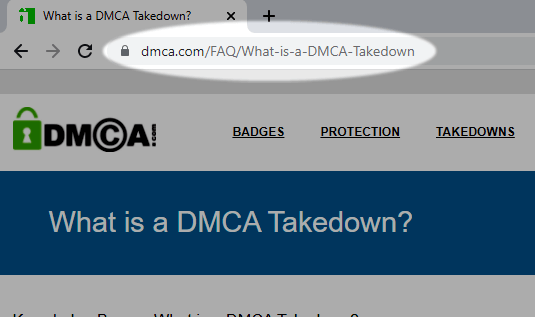
A DMCA Counter Notice is submitted in response to a valid DMCA Takedown by the accused infringing website owner (ISP subscriber client). It is submitted to the service provider (OSP/ISP) after the DMCA Takedown has been submitted and after the content has been removed.
The DMCA Counter Notice process occurs after the initial DMCA Take down has been completed (removal of claimed infringed content).
A counter notice cannot be used to defend against or as a defense to a Takedown Notice.
A counter notice cannot be used to delay the process of a Takedown Notice.
Once the service provider (ISP/OSP) has received a valid DMCA Counter Notice they must wait 10-14 days before they re-activate or allow access to the claimed infringing content. Unless the copyright owner (complainant) files a order in court against the infringing site owner, the defendant (ISP/OSP subscriber), and demonstrates the order to the ISP/OSP.
If you need to process a Counter Notice, we can help. Click here to submit the form.
DMCA.com Fast Tip
A DMCA Counter Notice can only be submitted once the content has been removed as requested in the DMCA Notice.
What is DMCA?
In the vast digital landscape of the United States, content sharing has become an integral part of our lives. However, this digital revolution has brought about its fair share of challenges, particularly when it comes to copyright infringement. To protect creators and copyright owners, the Digital Millennium Copyright Act (DMCA) was established. This legislation allows copyright holders to submit takedown requests if they believe their content has been unlawfully shared. Nonetheless, if your material was removed due to a DMCA takedown request, you have the option to file a counter claim and potentially reclaim your content.
What is a DMCA Takedown Notice?
A DMCA Takedown is when content is removed from a website or internet platform at the request of the owner of the content. The DMCA Takedown is a well-established and accepted internet standard followed by website owners and internet service providers everywhere.
Any owner of content has the right to process a takedown notice against a website owner and/or an Online Service Provider (e.g., ISP, hosting company etc.) if the content owner's property is found online without their permission.
If your content has been stolen, DMCA.com can help! Start Your Takedown
What does a counter notice do?
A DMCA counter notice is a legal avenue that individuals can pursue if they believe their content was wrongly taken down in response to a DMCA takedown request. It empowers them to challenge the claim made against them and request the restoration of their material. By filing a counter notice, individuals initiate a process that can potentially lead to the return of their content and the preservation of their online presence.
Who files DMCA Takedown Notices?
- social media users and participants
- content publishers or distributors (with permission of the content or copyright owners)
- content creators/owners
- copyright owners
- NFT owners
- code writers and publishers
- subject contained within the content and published without permission (special considerations may be required)
When should someone consider filing a counter notice?
It is crucial to understand that this decision requires careful consideration. Seeking legal advice is highly recommended before proceeding, as it can provide valuable insights into the potential consequences and the strength of one's case. Filing a counter notice involves legal proceedings, and having professional guidance can greatly influence the outcome.
What is needed for a counter notice?
Three main pieces of information are needed to get started with a counter notice:
1. Infringing URL

Where on the internet or platform does the DMCA Notice you received claim as the original? What is the link that they provided in the notice?
An example link would look like: https://www.badguy_site.com/webpage/image_2

2. Source URL
Where was your content located when it was removed? Was it on your social media profile? Was it from your own website? Provide the exact URL where it was published, even if the content has already been removed from its original location. The original URL is required for the notice. If it was online such as a website or cloud storage provide the link to the exact page it was on. You can upload the original content to a cloud storage service and provide that URL to assist with the filing.
An example link would look like: https://share.icloud.com/photos/my_original_content
3. Description of Ownership

What is the content owner's name and how was the content stolen? How is this content yours? How do you own it? Did you create it, buy it, copyright it? Who is claiming ownership of the content? Who is authorized to file the DMCA Takedown? When did you create the content and when was the content stolen? Be sure to provide a copy of the DMCA Notice received so the original claim can be reviewed.
An example description would sound like: "My photo I took of myself on my camera was stolen from my Google Drive and was posted on this website without my knowledge. I am the original owner of the photo the DMCA notice is false."
If you are unsure how to collect the information for these three categories, the Professional Takedown Team at DMCA.com can help with the answers. Click here to ask us about your situation.
DMCA.com Testimonial
Thank you very much! I am extremely pleased with the takedown service. It was quick and efficient. In addition, a clear line of communication was established and any and all questions or concerns I had were addressed. Case updates were also provided. I would definitely recommend this to other people and I plan on staying with DMCA if I have similar or any other issues with the internet. I consider DMCA to be my online guardian angel. -S.D.
How does the process work?
The DMCA counter notice serves as an individual's response to the copyright owner or the platform that processed the takedown request. It notifies them that the individual disputes their claim and firmly asserts their right to have the material reinstated. Importantly, it must include a statement made in good faith belief, stating that the removal or disabling of the material was a result of mistake or misidentification. Once the counter notice is received, the copyright owner is given a limited timeframe to respond. If they fail to file a lawsuit within the specified period, the platform hosting the content may choose to restore it.
Are there risks involved?
It is crucial to recognize that filing a counter notice carries certain risks. By submitting a counter notice, individuals open themselves up to the possibility of being sued by the copyright owner. The copyright owner might decide to initiate legal action in order to protect their copyright claims. Therefore, it is essential to thoroughly evaluate the case and seek legal advice to make an informed decision.
What types of websites process DMCA Takedowns?
Infringing content is taken down from many different websites and platforms. Here are some examples of where content is removed online:
- by the website owner, upon receipt of a DMCA Takedown Notice from the website owner's ISP / Hosting company. This would occur when ISP / Hosting company receives a notice sent by or on behalf of the content owner, distributor, publisher etc.
- from a UCG (User Generated Content) Platform (like Facebook and TikTok), upon receipt of a DMCA Takedown Notice sent by or on behalf of the infringed content owner, distributor, publisher etc.
- by the by the ISP or Hosting company of the website that is publishing the infringing content. This occurs because the website owner has not voluntarily complied with a DMCA Notice and the ISP or Hosting company must comply with the Takedown notice.
- by the website owner upon receipt of a DMCA Takedown Notice from the, or on behalf of, the content owner, distributor, publisher etc.
- when an infringing website is taken down or taken "offline" by its ISP or Hosting company. This occurs because the website owner does not voluntarily comply with a Takedown notice as described above.
A DMCA counter notice provides individuals in the United States with a legal recourse if their material has been removed due to a DMCA takedown request. These Takedown actions occur upon receipt of a DMCA Takedown Notice which uses stipulations laid out in the Digital Millennium Copyright Act. (DMCA). This Act directly addresses the takedown of (copyright) infringed content from a website which is publishing content in violation of copyright protection act or content being used without permission or not in accordance with the sworn statement of the content owner.
By filing a counter notice, individuals can challenge the claim made against them and request the restoration of their content. However, it is important to exercise caution, seek legal advice, and understand the potential risks involved before proceeding.
See more information on Counter Notices here: https://www.copyright.gov/legislation/dmca.pdf - page 12
Related DMCA Takedown FAQ's
- What to do When you Receive a DMCA Takedown Notice
- How to Reduce Fake DMCA Takedown Notices
- How do I Protect my Website Against Content Theft
- What are DMCA Takedowns
- What is DMCA.com